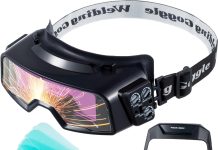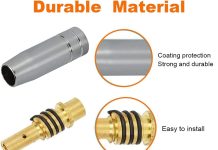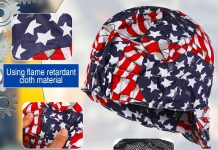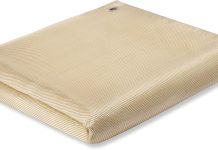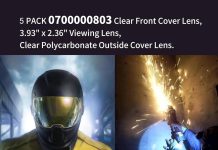Outdoor welding poses unique challenges that require a welding method capable of withstanding harsh environmental conditions. That’s where shielded metal arc welding (SMAW) comes to the rescue! SMAW, also known as stick welding, offers a range of benefits that make it an ideal choice for welding projects done outdoors. From its versatility and portability to its ability to handle dirty or rusty materials, SMAW ensures reliable and durable welds even in challenging settings. In this article, we will explore the numerous advantages that make shielded metal arc welding the go-to method for outdoor welding tasks. So, grab your welding gear, and let’s discover the benefits of SMAW!
Review contents
Increased Safety and Protection
Reduced risk of electric shock
When it comes to outdoor welding, safety is of paramount importance. Shielded Metal Arc Welding (SMAW) provides increased safety by reducing the risk of electric shock. This welding technique utilizes a protective coating on the electrode, which acts as a shield against electric currents. This coating not only prevents accidental contact with live electrical parts but also insulates the welder from grounding. As a result, the welder can work with peace of mind, knowing that their safety is prioritized.
Protection against wind and rain
Working outdoors exposes welders to various weather conditions. Shielded Metal Arc Welding offers excellent protection against wind and rain, ensuring that the welding process is not compromised. The protective coating on the electrode serves as a barrier against moisture, preventing it from penetrating the weld joint and causing defects. Additionally, SMAW electrodes are designed to withstand adverse weather conditions, allowing welders to work confidently regardless of the elements.
Prevention of UV radiation exposure
Outdoor welding exposes welders to harmful ultraviolet (UV) radiation emitted during the welding process. However, SMAW helps mitigate this risk by providing protection against UV radiation exposure. The electrode’s protective coating acts as a shield, reducing the intensity of UV radiation that reaches the welder’s skin. By minimizing exposure to UV radiation, SMAW contributes to the overall safety and well-being of welders working outdoors.
Versatility and Portability
Suitable for various materials
Shielded Metal Arc Welding is a versatile welding technique that can be used on a wide range of materials. Whether it’s mild steel, stainless steel, cast iron, or even non-ferrous metals, SMAW can handle them all. This adaptability makes SMAW a go-to choice for outdoor welding projects where different materials may need to be joined. Welders can confidently rely on SMAW to deliver strong and reliable welds, regardless of the material being worked on.
Can be used in remote locations
One of the significant advantages of SMAW is its ability to be used in remote locations. Unlike other welding techniques that may require a stable power source or specialized equipment, SMAW only requires a welding machine and a power source, such as a generator. This flexibility allows welders to carry out their work in remote areas where access to electricity may be limited. Whether it’s construction sites, oil fields, or infrastructure projects in isolated regions, SMAW provides the portability needed to get the job done.
Easy to transport and set up
Another key benefit of SMAW for outdoor welding is its ease of transport and setup. The equipment required for SMAW is relatively compact and lightweight compared to other welding processes. Welders can easily transport their welding machine and electrodes to the desired location without much hassle. Additionally, setting up SMAW equipment is straightforward and does not require any complex assembly. This ease of use ensures that welders can quickly and efficiently get started on their outdoor welding projects.
Ease of Use and Cost-Effectiveness
Simple and straightforward operation
Shielded Metal Arc Welding is renowned for its simplicity and straightforward operation. The process involves striking an electric arc between the electrode and the workpiece, which generates heat to melt the base metals. The electrode’s filler metal then forms the weld joint. This straightforward process makes SMAW accessible to welders of all skill levels, from beginners to seasoned professionals. The ease of use eliminates the need for complicated setup or extensive training, allowing welders to focus on their work with confidence.
Minimal equipment required
In addition to its simplicity, SMAW also boasts minimal equipment requirements. Unlike some welding techniques that necessitate advanced machinery or complex accessories, SMAW only requires a welding machine, electrodes, and a power source. This minimal equipment setup translates into cost savings for welders and businesses alike. By eliminating the need for expensive machinery and accessories, SMAW offers a more cost-effective solution for outdoor welding projects without compromising on the quality of the welds produced.
Lower overall costs
When considering the overall costs associated with outdoor welding, SMAW proves to be a cost-effective option. The minimal equipment requirements and the accessibility of SMAW contribute to lower initial investment costs. Additionally, SMAW electrodes are affordable and readily available, further reducing operational expenses. Moreover, SMAW’s versatility and suitability for various materials mean that welders can rely on a single welding process, eliminating the need to invest in multiple welding techniques. This cost-effectiveness makes SMAW a sensible choice for both small-scale projects and large-scale construction and fabrication work.
Durability and Strength
High-quality welds
Shielded Metal Arc Welding is well-known for producing high-quality welds that possess exceptional strength and durability. The intense heat generated during SMAW ensures deep penetration into the weld joint, resulting in robust and reliable welds. The use of coated electrodes further enhances the integrity of the welds, protecting them from potential defects and weaknesses. Whether it’s joining structural steel beams, repairing heavy machinery, or fabricating pipelines, SMAW consistently delivers welds of superior quality that withstand the test of time.
Resists corrosion and weathering
Outdoor welding projects are often subjected to harsh environmental conditions that can lead to corrosion and weathering over time. However, SMAW provides excellent resistance against these issues. The protective coating on the electrode acts as a barrier, preventing moisture, air, and contaminants from coming into direct contact with the weld joint. This protection significantly reduces the risk of rust and corrosion, ensuring the longevity and integrity of the welded structures. With SMAW, welders can confidently undertake outdoor welding projects, knowing that their work will withstand the elements.
Strong and reliable joints
When it comes to outdoor welding, strong and reliable joints are crucial for the structural integrity of the welded components. SMAW excels in creating such joints that can withstand heavy loads and stresses. The deep penetration achieved by SMAW ensures a fusion between the base metals and the filler metal, resulting in a joint that is as strong as the parent material. This strength is further enhanced by the electrode’s protective coating, which shields the molten weld pool from atmospheric gases that can weaken the joint. The result is a weld joint that is dependable, durable, and up to the task.
Flexibility in Welding Positions
Allows for various welding positions
Outdoor welding often requires working in different positions, such as flat, vertical, and overhead. SMAW offers the versatility to weld in various positions, making it an ideal choice for outdoor welding projects. The nature of the welding process allows welders to manipulate the electrode’s angle and direction of travel to accommodate the desired welding position. This flexibility ensures that welders can achieve high-quality welds in any orientation, regardless of the complexity or accessibility of the workpiece.
Suitable for overhead and vertical welding
SMAW’s flexibility extends to vertical and overhead welding, two positions commonly encountered in outdoor welding. Vertical welding involves welding on the side of a vertical surface, while overhead welding is performed from underneath a horizontal surface. Both positions can be challenging, but SMAW excels in these situations. The control and stability provided by SMAW allow welders to deposit the filler metal accurately and prevent molten weld metal from falling or sagging. This capability enables welders to tackle outdoor welding projects with confidence, irrespective of the welding position required.
Enables welding in tight spaces
Outdoor welding projects can present tight and confined spaces that require precision and adaptability. SMAW’s electrode design makes it well-suited for welding in such spaces. The coated electrode can be easily maneuvered and controlled in tight areas, allowing welders to access difficult-to-reach weld joints. Whether it’s welding in between pipes, repairing machinery in cramped spaces, or fabricating intricate structures, SMAW’s ability to accommodate tight spaces ensures that the welding task at hand can be accomplished efficiently and effectively.
Capability to Weld Thick Materials
Can weld thick metal sections
Outdoor welding often involves working with thick metal sections that require a welding technique capable of penetrating deeply. SMAW excels in this regard, making it an ideal choice for welding thick materials. The intense heat generated by SMAW ensures deep penetration into the weld joint, resulting in a weld of sufficient strength and integrity. Whether it’s constructing bridges, manufacturing large-scale machinery, or fabricating offshore structures, SMAW’s capability to weld thick metal sections is invaluable for outdoor welding projects.
Penetrates deeply into the weld joint
SMAW’s ability to penetrate deeply into the weld joint ensures that the weld is strong and able to withstand heavy loads. The intense heat created by the electric arc melts the base metals, allowing the filler metal to flow and bond with the parent material. This deep penetration creates a fusion zone that is strong and resilient, providing the necessary strength for thick materials and heavy-duty applications. With SMAW, welders can confidently tackle outdoor welding projects that involve working with substantial metal sections.
Effective for heavy-duty applications
When it comes to outdoor welding, heavy-duty applications are prevalent. SMAW is well-suited for these applications as it produces welds that can withstand demanding conditions and loads. Whether it’s constructing infrastructure, fabricating industrial equipment, or repairing heavy machinery, SMAW ensures that the welded components possess the necessary strength and durability for the task at hand. The ability of SMAW to weld thick materials effectively makes it an indispensable choice for outdoor welding projects with heavy-duty requirements.
Adaptability to Challenging Conditions
Works well in windy conditions
Outdoor welding can often be hindered by windy conditions that affect the stability of the welding arc. SMAW, however, offers excellent performance in such environments. The nature of the welding process and the characteristics of SMAW electrodes allow welders to maintain a stable arc even in windy conditions. The electrode’s coating acts as a windbreak, protecting the molten weld pool from gusts of wind that could disrupt the arc. This adaptability enables welders to continue their work confidently, regardless of the wind conditions they may encounter.
Effective in high-altitude environments
Some outdoor welding projects take place in high-altitude environments, where oxygen levels are lower. SMAW is particularly well-suited for these conditions due to its adaptability to varying atmospheric pressures. The electrode’s protective coating plays a critical role in this adaptability, as it ensures the stability of the arc and the integrity of the weld joint at higher elevations. With SMAW, welders can undertake outdoor welding projects at any altitude, knowing that the welding process will remain unaffected by the reduced oxygen levels.
Tolerates dirty and contaminated surfaces
Outdoor welding often involves working with dirty and contaminated surfaces that can adversely affect the welding process. SMAW is known for its tolerance of such conditions. The protective coating on the electrode acts as a shield, preventing contaminants from directly contacting the molten weld pool. This protection ensures that the weld joint remains clean and free from defects, even when working with surfaces that may have rust, paint, or other contaminants. SMAW’s adaptability to dirty and contaminated surfaces makes it an ideal choice for outdoor welding projects where surface preparation may be challenging.
Suitability for Structural and Fabrication Work
Ideal for structural steel construction
Shielded Metal Arc Welding is widely used in structural steel construction due to its suitability for heavy-duty applications. From bridges and buildings to large-scale infrastructure projects, SMAW is the go-to welding technique for joining structural steel members. Its capability to weld thick steel sections, as well as its ability to produce high-quality and reliable welds, make SMAW an indispensable choice in the construction industry. With SMAW, welders can confidently contribute to the creation of robust and durable structures that stand the test of time.
Applicable to fabrication projects
Fabrication projects often involve welding multiple components together to create a complex structure or assembly. SMAW is highly applicable to such projects, thanks to its adaptability and versatility. Whether it’s manufacturing machinery, fabricating pipelines, or constructing intricate metalwork, SMAW offers the necessary strength, control, and reliability to deliver high-quality welds in fabrication settings. The straightforward operation and minimal equipment requirements of SMAW contribute to efficient and cost-effective fabrication work, making it a popular choice in the industry.
Commonly used in pipeline welding
The construction and maintenance of pipelines require welding techniques that can withstand demanding conditions and ensure the integrity of the welds. SMAW has long been a preferred method for pipeline welding. Its ability to weld thick metal sections, penetrate deeply into the weld joint, and produce strong and reliable welds make it suitable for the challenging environment of pipeline welding. Additionally, SMAW can handle a variety of materials commonly used in pipeline construction, allowing welders to tackle different types of joints and connections. With SMAW, pipeline welders can ensure the safe and reliable transportation of fluids and gases through the welded pipeline network.
Good Arc Stability and Control
Produces a stable arc
The stability of the welding arc is crucial for achieving high-quality welds. SMAW excels in producing a stable arc, even in challenging outdoor conditions. The design of SMAW electrodes, coupled with the welding process, enables welders to maintain a consistent and steady arc throughout the welding operation. This stability ensures precise control over the deposition of filler metal, resulting in welds of superior quality and integrity. With SMAW, welders can confidently control the welding arc, minimizing the risk of defects and inconsistencies in the welds.
Allows for precise control
Precision and control are essential when it comes to outdoor welding, especially in applications that demand accuracy and adherence to specific welding procedures. SMAW provides welders with the necessary precision and control required for such tasks. The manipulation of the electrode’s angle and the direction of travel allows welders to precisely deposit the filler metal and control the shape and size of the weld bead. This level of control ensures that welds meet the required specifications, resulting in welds that are aesthetically pleasing, structurally sound, and conforming to industry standards.
Minimizes spatter and slag
Spatter and slag are common issues encountered during welding, and they can pose challenges when working outdoors. SMAW, however, minimizes these issues through its welding process and electrode design. By using coated electrodes, SMAW reduces the formation of spatter, which refers to the molten droplets expelled during the welding process. This reduction in spatter not only minimizes cleanup efforts but also ensures that the weld is free from weld defects caused by spatter. Additionally, the slag produced during SMAW can be readily removed, further contributing to the quality and aesthetics of the welds produced.
Availability of Consumables and Training
Wide range of electrode options
Shielded Metal Arc Welding benefits from the availability of a wide range of electrode options, each tailored to specific welding applications. These electrodes vary in composition, diameter, and coating, allowing welders to choose the most suitable electrode for their outdoor welding projects. Whether it’s electrodes optimized for higher penetration, improved corrosion resistance, or reduced spatter, SMAW provides welders with the flexibility to choose the best consumables for their specific requirements. This availability ensures that welders can achieve optimal results and productivity in their outdoor welding endeavors.
Abundance of training resources
For welders looking to enhance their skills or learn SMAW for the first time, there is no shortage of training resources available. SMAW is a widely recognized and practiced welding technique, which means that comprehensive training courses and educational material are readily accessible. These resources cover everything from SMAW fundamentals to advanced techniques, providing welders with the knowledge and expertise needed to excel in outdoor welding projects. Whether through formal training programs, online tutorials, or hands-on workshops, welders can take advantage of abundant training resources to master SMAW and confidently undertake outdoor welding projects.
Readily available equipment and accessories
The popularity and widespread use of Shielded Metal Arc Welding ensure the availability of the necessary equipment and accessories. Welding machines designed for SMAW, as well as the associated accessories such as cables, clamps, and protective gear, are readily available from reputable suppliers. This accessibility of equipment and accessories allows welders to easily procure the necessary tools to carry out their outdoor welding projects. Additionally, the availability of spare parts and service support ensures that any maintenance or repair needs can be promptly addressed, minimizing downtime and maximizing productivity.

